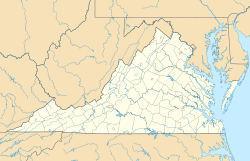Lucy Addison High School | |
 Lucy Addison High School building in 2025 | |
| Location | 40 Douglass Avenue NW Roanoke, Virginia |
|---|---|
| Coordinates | 37°17′00″N79°56′24″W / 37.28333°N 79.94000°W |
| Area | 1.32 acres (0.53 ha) |
| Built | 1928 |
| Architect | Edward Frye |
| Architectural style | Georgian Revival |
| NRHP reference No. | 100012118 [1] |
| VLR No. | 128-6480 |
| Significant dates | |
| Added to NRHP | August 12, 2025 |
| Designated VLR | June 12, 2025 [2] |
Lucy Addison High School was an all-African American high school founded in 1928 during Jim Crow racial segregation in Roanoke, Virginia.
Contents
Named after Lucy Addison, a pioneering African American educator and first principal of the segregated Harrison School, Lucy Addison High School became Roanoke's second all-African American secondary educational institution. [3] During its history, the school operated in two separate buildings: at Roanoke's Douglas and Hart Avenues between 1928 and 1952; and at Roanoke's Fifth Street and Orange Avenue between 1953 and 1970.
As a result of Roanoke's desegregation of its high schools in 1963, Addison eventually became an integrated high school in 1970. [4] Though the City of Roanoke closed Addison's doors as a high school in 1973, Addison was converted into Lucy Addison Junior High School. The building now operates as Lucy Addison Junior High School within the Roanoke City Public School System. [5]

